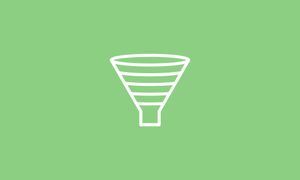Are you wondering how to start affiliate marketing with no money?
Don’t worry—it’s possible with the right strategies and tools.
The good news is that you’ll find everything you need to build a lucrative affiliate marketing strategy today.
The only catch is that you need to read this whole guide.
Let’s get started.
What is affiliate marketing?
Affiliate marketing is the practice of promoting another brand’s products and earning a commission for every sale. An affiliate marketer’s success is largely performance-based, meaning their earnings primarily come from affiliate sales.
Bloggers, social media influencers, vloggers, and website owners—anyone who owns a content distribution channel can become an affiliate marketer. They get credited for sales whenever customers use their designated “affiliate link” to make purchases.
Ultimately, you get paid for sending your audience to businesses.
Benefits of affiliate marketing
Here are some of the key benefits of running an affiliate marketing business:
Benefit 1: Generate passive income
An affiliate marketer makes money online whenever a customer clicks their affiliate link and makes a purchase.
They don’t need to be present in every sale or active in attracting customers. As long as their affiliate link stays online, people can use it to complete purchases—rewarding the affiliate marketer with passive income.
Benefit 2: Low overheads
You don’t need a large capital to start an affiliate marketing business.
Sign up for a free affiliate program and promote your affiliate link on free content channels. This includes social media, emails, guest posts, or any channel that allows users to promote affiliate products.
Even if you choose to build a self-hosted site, there are options that cost less than £100. Build your website slowly as you gain more capital.
Benefit 3: Wide range of ready-to-sell affiliate products
Affiliate marketing lets you make money without spending anything on product R&D, manufacturing, inventory management, and so on.
The products are already there. You just need to choose the products you want to promote, sign up for the company’s affiliate program, and start your affiliate business.
Large affiliate networks like CJ Affiliate, ClickBank, and Amazon Associates have a diverse catalogue of products. This allows aspiring affiliate marketers with different interests and spheres of expertise to turn their passion into a thriving online business.
Some examples of affiliate products you can promote are:
- Fashion items
- Gadgets
- eBooks
- Online courses
- Software
- Gardening tools
- Online services
Benefit 4: Unlimited profit potential
An affiliate marketer can promote as many affiliate products as they want. In fact, most successful affiliate marketing businesses promote several products on one website.
They can also jump outside their fields of expertise to reach a wider audience and unlock new income opportunities. As long as you’re willing to build new brands from scratch, affiliate marketing lets you make money in any niche.
Benefit 5: Easy to learn
The affiliate marketing world is peppered with online communities, affiliate courses, and other resources that help anyone learn the business.
Top affiliate networks also provide their partners with loads of useful guides, tutorials, and even free materials for marketing their products. It’s up to the marketer to decide how fast and effective their learning experience will be.
How hard is affiliate marketing?
Learning how to do affiliate marketing versus actually doing it are two different things.
Beginners can grasp the concept of affiliate marketing in less than a day. But they still have a lot of work to do and marketing strategies to launch before they can make their first sale.
You don’t need a huge investment to join an affiliate program and promote your first affiliate product. However, you need to spend time learning the ropes, running tests, and optimising your affiliate marketing strategies to get results.
How to start affiliate marketing with no money
Starting affiliate marketing with decent capital is indeed an advantage, but it’s not a requirement.
Follow these steps to become a profiting affiliate marketer with little to no investment.
Step 1: Decide your niche
The first step in any business endeavour is to pick your niche.
Choosing a niche not only affects the long-term profitability and scalability of your affiliate marketing business. It will also have a huge impact on your long-term marketing performance.
If you’re passionate about your niche, it’s easier to stay motivated even if you’re not getting results yet. You can also utilise the knowledge and experience you’ve accumulated over the years to produce top-quality, original affiliate marketing content.
However, passion and expertise aren’t the only factors to consider when deciding on a niche.
Since you have a limited budget, it’s crucial to “niche down” and pick a small industry that isn’t saturated with big-budget competitors.
Google Trends is one of the most popular tools for discovering profitable affiliate marketing niches. Use it by entering any keyword or topic related to your passion.
Image Source: trends.google.com
Look under “Related topics” and “Related queries” to find potential niches for your affiliate marketing business.
For example, if you’re passionate about graphic design, here are some of the potential smaller niches you can explore:
Image Source: trends.google.com
In the example above, your niche can be about running design studios, graphic design software (Adobe Spark or Figma), or laptops for graphic design.
Keep clicking the ‘Next’ buttons beside the number of results to find more ideas.
Image Source: trends.google.com
Step 2: Define your target audience
Understand your target audience to identify content and product ideas that will pique their interest. This depends on the niche you chose in the previous step.
Suppose you went with “Adobe graphic design” as your niche.
Your target audience is clearly graphic designers who use (or want to use) Adobe products.
From there, you can build your target audience persona with a tool like Make My Persona. Answer the questions and provide the missing details in the guided tutorial to generate your persona within minutes.
Image Source: hubspot.com
If you’re not sure who your target audience is, below are a few tips you can try:
- Check out and participate in social media conversations.
- If you have an existing website or social media channels, use audience analytics to track user demographics.
- Use LinkedIn to identify a lookalike audience and analyse their professional and educational background.
- Run surveys, interviews, and polls on social media (or in-person if you have the resources).
Step 3: Look for affiliate programs and products
After researching your target audience, the next step is to look for an affiliate network or program that sells relevant products.
For example, if you want to focus on Adobe graphic design products, sign up for the Adobe Express affiliate program for free.
Image Source: adobe.com
Alternatively, look for affiliate products that your target audience may need.
For instance, beginner Adobe software users may require in-depth learning resources. That’s where products like books, online courses, tools, and templates come in.
Find these related products on affiliate networks such as:
- ClickBank
- eBay Partner Network
- Amazon Associates
- CJ
- ShareASale
- AWIN
- Avangate Affiliate Network
Signing up for an affiliate program is free, so don’t hesitate to join as many affiliate networks as you can.
Cast a wide net, research eye-catching products, and compare them against each other. Move on to the next step only if you’re 100% confident in the affiliate product you chose.
Step 4: Conduct keyword research
Keyword research helps with content research, which entails coming up with content ideas for affiliate marketing. If you plan to build a website, keyword research is also an essential prerequisite for SEO (Search Engine Optimisation).
A tool like Semrush will help you do all these through the Keyword Magic Tool—a popular keyword research tool for affiliate marketers, bloggers, agencies, and businesses.
Image Source: semrush.com
Although Semrush is a paid tool, it offers a free version without any time limits. You are, however, limited to 10 results and 10 research requests per day.
To use Keyword Magic Tool, enter any relevant topic or keyword and click ‘Search.’ With a free account, Semrush will provide you with up to 10 keyword suggestions per report.
Image Source: semrush.com
Here are a few tips to remember when conducting keyword research:
- Look at the ‘Intent’ column. Since you want users who will purchase your affiliate products, target keywords with a “Transactional” or “Commercial” intent. The Keyword Magic Tool is one of the few keyword research tools that reveal this information.
- Watch the KD (Keyword Difficulty) rating. Keywords that have a rating of 70 and above are impossible to rank for unless you have a workable SEO budget. The ideal keyword has a reasonable amount of monthly search volume and a KD of 14-50.
- Check question-based keywords. If you need content ideas, switch to the ‘Questions’ tab. This reveals questions that your target audience asks about your keyword.
- Use multiple tools. Other than Semrush, use other free keyword research tools for your affiliate marketing niche site. Some examples are AnswerThePublic, KeywordTool.io, and Ubersuggest.
Step 5: Build a free website
Most, if not all, successful affiliate marketers use their own websites to make affiliate sales.
If you have zero budget, use free website builders like Wix and WordPress.com. These tools come with customisable themes that anyone can use regardless of web development knowledge.
Image Source: wordpress.com
Your website will house most of your affiliate marketing and SEO content. They will help you attract the right kind of audience through free sources, namely search engines and social media.
Once you start earning affiliate commissions, consider migrating to a self-hosted website with these steps:
- Register a unique and brandable domain name using blogging-focused hosting services like 20i.
- Create custom graphics with free tools like Canva—or work with design services like Kimp for an eye-popping website.
- Prioritise usability and use tools like PageSpeed Insights to improve performance-related issues.
Step 6: Promote affiliate links on social media
If you want to make affiliate sales faster, build a social media presence and create content that promotes your affiliate links. This includes YouTube videos, TikTok posts, Instagram feed images, and so on.
Use a content format that best communicates the value of your affiliate product to your target audience.
For example, Howfinity published a YouTube video tutorial about Adobe Creative Cloud Express. To turn views into affiliate sales, the channel inserted their affiliate link in the post’s description—briefly mentioning it within the video.
Image Source: youtube.com, @Howfinity
Promoting affiliate products on social media is also a great content strategy for mobile. That’s because your target audience can access your affiliate marketing content using native apps installed on their mobile devices.
Step 7: Set up a content tracking system
Implement a content tracking system to monitor the performance of your affiliate marketing content over time. It will also help you adjust your content strategy based on your audience’s preferences.
Use an analytics platform like Google Analytics to track your top-performing posts and content distribution channels constantly. It will also help you learn more about your audience’s demographics and behaviour.
And yes—Google Analytics is 100% free to use.
Be sure to check out this Google Analytics 4 tutorial for instructions on how to use the platform’s latest version.
For social media, use the built-in user engagement analytics tool. TikTok, for one, tracks follower activity so you know the best time to post your affiliate marketing content.
Image Source: tiktok app
Step 8: Use learning resources for new affiliate marketers
To fully understand how affiliate marketing works, make self-learning your new lifestyle.
You’ll find lots of learning resources that will teach you the fundamentals, advanced strategies, and tools for a successful affiliate marketing business.
Check out these examples:
- The ClickBank affiliate marketing course
- Semrush affiliate marketing overview course
- Free affiliate marketing courses on Udemy
- Affiliate Marketing Tutorial for Beginners 2022 on YouTube by Santrel Media
If you can allot a small budget for learning affiliate marketing, here are some of the best books for affiliate marketing you can purchase.
- Affiliate Marketing for Dummies
- Affiliate Marketing Secrets by Chandler Wright
- From Nothing by Ian Pribyl
- Traffic Secrets by Russell Brunson
- The 1-Page Marketing Plan by Allan Dib
Best niches for affiliate marketing
Before I wrap up this post, here are some of the best niches for affiliate marketing you should explore this 2022:
- Home security
- Web hosting
- Essential oils
- Online dating
- Yoga
- Credit repair
- Investing
- Supplements
- Baby products
- Cryptocurrencies
- Solar power
- Veganism
- Vaping
- Pet care
- Professional growth
- Binary options
- Survival
- Tax preparation
- Hunting
- Meditation
Hone your affiliate marketing success today
Do you want to be the next affiliate marketing success story?
Don’t struggle through the tough parts. Reach out to me today and let me and my team help craft an affiliate marketing strategy that will work for you.






